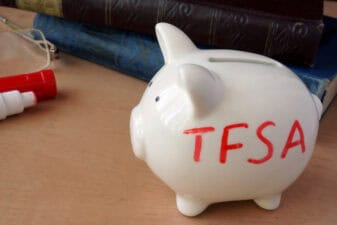Alimentation Couche-Tard (TSX:ATD) and Empire (TSX:EMP.A) are consumer stocks that could provide resilient results and solid long-term returns. Which is a better buy today? Let’s take a closer look at both.
Business overview
Couche-Tard is a global convenience store consolidator with many locations providing roadside fuel retailing. Over the years, it has expanded its footprint via strategic acquisitions and mergers. Today, it has a strong presence in Canada and the United States. As well, it has a leading market share across many European markets. Its large scale provides a better economy of scale versus smaller players. Its decentralized business model also drives accountability and encourages innovation.
Empire operates under a number of banners, including Sobeys, Safeway, Foodland, FreshCo, and IGA. As a grocery chain, Empire is a consumer staples stock, and its business should be resilient through the economic cycle, as people need to eat, no matter if the economy is doing well or not so well. Perhaps, grocery stores are even more critical during recessionary periods when people prefer to cook their meals to eat out less often and save more.
Both are low-margin, high-volume businesses. For the trailing 12 months, Couche-Tard’s operating margin was close to 5.5%, while Empire’s was about 3.8%, while their net margins were about 4.1% and 2.5%, respectively, in the period.
Past results
Couche-Tard has demonstrated a strong track record of growing its profitability. In the past 10 fiscal years, Couche-Tard increased its adjusted earnings per share (EPS) and free cash flow per share by 22.5% and 19.6% per year, respectively. This increase in profitability translated to similar returns. Specifically, its 10-year total returns were almost 21% per year, which outperformed the market.
Empire’s results in the past 10 fiscal years were much worse. It increased its adjusted EPS by 4.5% in the period primarily because of the stumble in the integration of the Safeway merger. Since then, the business has obviously turned around. For example, it experienced elevated results in the turnaround, indicated by its five-year adjusted EPS growth of 17.1% per year. Its 10-year total returns were about 4.4% per year, while its five-year returns were much better at 8% annually, which was also about the same as the market returns.
Dividend
Both stocks offer sustainable dividends that are covered by their earnings. At $65.81 per share at writing, Couche-Tard stock offers a puny dividend yield of about 0.85%. However, it has a high dividend-growth history. Specifically, it has increased its dividend for about 13 consecutive years with a 10-year dividend-growth rate of approximately 25%.
At $34.95 per share at writing, Empire stock’s dividend yield is close to 2.1%. It is also a dividend grower with a longer dividend-growth streak of about 28 consecutive years. Its 10-year dividend-growth rate of 7.3% is not bad.
Which is a better buy today?
If past returns are indicative of future returns, total-return investors should first consider building a position in Couche-Tard stock. Commission-free trading platforms like Wealthsimple provide a no-cost way to invest. Moreover, the analyst consensus 12-month price target suggests Couche-Tard trades at a slightly bigger discount of about 17% (versus Empire’s discount of about 15%) at their recent quotations.








